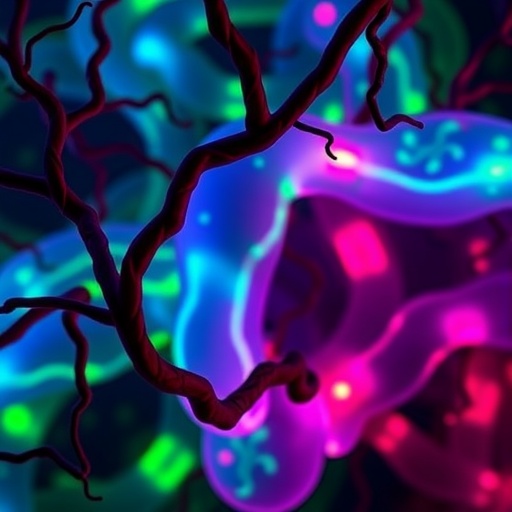From 2002 to 2005, about 800 people in Minnesota and Utah drank more than 1,500 milkshakes, and they got to say they were doing it for science.
These self-sacrificing study subjects are participants of the Genetics of Lipid-lowering Drugs and Diet Network (GOLDN), and this wasn't their first rodeo. Some of them have been put under the microscope for about 25 years now to help researchers better understand cardiovascular risks.
This time they were helping scientists determine how genes influence cholesterol levels after high-fat meals and how genes affect the response to a medication for lowering triglyceride and bad cholesterol.
Ultimately, the team of medical geneticists at the University of Texas Health Science Center at Houston, University of Alabama at Birmingham, the University of Kentucky, and seven other institutions discovered new uncommon gene variants that affect patients' response to the cholesterol drug. The reported their findings in the Journal of Lipid Research.
Chronically high cholesterol results in the gradual deposition of lipids on artery walls, increasing the risk of heart attacks and stroke. This clogging process is known as atherosclerosis. A diet high in fat is just one of several risk factors. Family history strongly affects a person's risk of developing it.
"Triglyceride and cholesterol levels are influenced by what people eat and whether they take drugs to lower fat and cholesterol," said the study's lead author, Xin Geng, a postdoctoral fellow at the University of Texas Health Science Center at Houston. "We know, however, that not everyone's triglyceride and cholesterol levels respond the same to diet and drugs. Previous research suggests that these differences in response to diet and drugs may be caused by genetic factors inherited from parents."
While researchers have identified genetic variants that affect lipid responses, the medical geneticists who worked on the milkshake study set out to identify additional variants that have so far escaped detection.
Drinking milkshakes, giving blood
Each GOLDN participant came to the lab with an empty stomach and drank a milkshake concocted from heavy whipping cream, chocolate or strawberry syrup, and crushed ice. More than four-fifths of the calories in the meal came from fat.
The scientists drew their blood before and after the meal and measured high-density lipoprotein (known as "good" cholesterol), low-density lipoprotein (known as "bad" cholesterol) and triglycerides (basically, fat).
They sent the patients home to take fenofibrate, a medication that can lower cholesterol and triglyceride levels, for three weeks. After that treatment, patients returned to the lab for another milkshake and another set of blood draws.
The scientists also sequenced all of the genes and examined the gene expression level in the participants' blood cells.
Novel rare gene variants
"Until recently," said Degui Zhi, senior author from UTHSC at Houston, "it was thought that common genetic variants were the ones that caused variability in people's triglyceride and cholesterol levels."
However, common genetic variants explained less than a quarter of inherited variability in triglyceride levels. "Our hypothesis was that at least some of the 48 percent of unexplained variability could be driven by rare genetic variants, those that occur in less than 5 percent of the population."
Indeed, the researchers found variants of at least three genes that were not very widespread in the study population but did correlate with lipid changes in the people who had them.
"We found that variants in one gene, called SIPA1L2, predicted triglyceride level changes after consuming the milkshake. Variants in another gene, ITGA7, predicted LDL-cholesterol level ("bad" cholesterol) changes after taking the drug. And variants in a third gene, CEP72, predicted triglyceride response when comparing the pre-fenofibrate milkshake experiment to the post-fenofibrate milkshake experiment," said Ryan Irvin, another collaborator from UAB.
The researchers say their findings should spur other scientists to look for additional rare gene variants, including non-protein-coding DNA that fell outside the scope of this study.
They also emphasize that their study population was not diverse. Most of the GOLDN participants are white. Looking for rare variants in other populations may turn up additional important genes.
"Future studies can begin where we left off by trying to uncover exactly how the metabolic pathways and mechanisms these genes are part of interact with dietary fat and fenofibrate to change triglyceride and cholesterol levels," said Donna Arnett, dean of the UK College of Public Health and the GOLDN principal investigator. "Armed with this knowledge, we will be one step closer to finding new ways to prevent and/or treat unhealthy triglyceride and cholesterol levels."
###
The research was sponsored by the National Institutes of Health.
About the Journal of Lipid Research
The Journal of Lipid Research (JLR) is the most-cited journal devoted to lipids in the world. For over 50 years, it has focused on the science of lipids in health and disease. The JLR aims to be on the forefront of the emerging areas of genomics, proteomics, and lipidomics as they relate to lipid metabolism and function. For more information about JLR, visit http://www.jlr.org.
About the American Society for Biochemistry and Molecular Biology
The ASBMB is a nonprofit scientific and educational organization with more than 11,000 members worldwide. Most members teach and conduct research at colleges and universities. Others conduct research in government laboratories, at nonprofit research institutions and in industry. The Society publishes three journals: the Journal of Biological Chemistry, the Journal of Lipid Research, and Molecular and Cellular Proteomics. For more information about ASBMB, visit http://www.asbmb.org.
Media Contact
Laurel Oldach
[email protected]
240-283-6648
@asbmb
http://www.asbmb.org
http://dx.doi.org/10.1194/jlr.P080333




